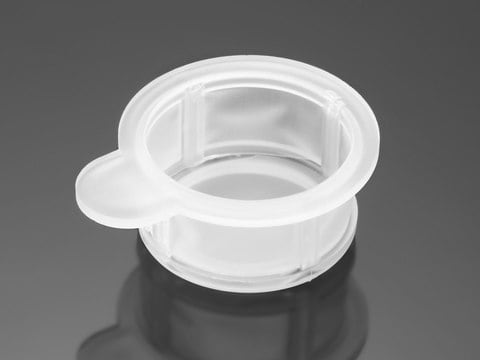D1947
Diffinity RapidTip®
for PCR Purification
Synonym(s):
PCR clean up tip, PCR purification tip, PCR reaction clean-up tip
Sign Into View Organizational & Contract Pricing
All Photos(1)
About This Item
Recommended Products
Quality Level
form
solid
manufacturer/tradename
(Diffinity Genomics, Inc.)
capacity
50(µL)
storage temp.
room temp
Looking for similar products? Visit Product Comparison Guide
General description
Diffinity RapidTip effectively removes dNTPs, primers and primer dimers while providing greater than 90% recovery of pure DNA fragments from 100 bp to 10 kb. The functional pipette tip contains everything you need for PCR purification. The tip is filled with a proprietary adsorption technology that has a differential affinity for PCR components. The dispensed solution yields purified, high quality DNA ready for downstream applications such as DNA sequencing, SNP analysis and microarray printing.
Application
Diffinity RapidTip® has been used in PCR product purification.
Features and Benefits
- Single step
- Recovers 90% of high quality dsDNA
- Optimized for 25 μL RXN
Legal Information
RapidTip is a registered trademark of Diffinity Genomics, Inc.
Certificates of Analysis (COA)
Search for Certificates of Analysis (COA) by entering the products Lot/Batch Number. Lot and Batch Numbers can be found on a product’s label following the words ‘Lot’ or ‘Batch’.
Already Own This Product?
Find documentation for the products that you have recently purchased in the Document Library.
Sarah L Dean et al.
Molecular ecology, 23(6), 1364-1378 (2013-10-12)
Nitrogen (N) deposition rates are increasing globally due to anthropogenic activities. Plant community responses to N are often attributed to altered competitive interactions between plants, but may also be a result of microbial responses to N, particularly root-associated fungi (RAF)
Michael J Goblirsch et al.
PloS one, 8(7), e69831-e69831 (2013-07-31)
A major hindrance to the study of honey bee pathogens or the effects of pesticides and nutritional deficiencies is the lack of controlled in vitro culture systems comprised of honey bee cells. Such systems are important to determine the impact
Teruaki Nakatsuji et al.
Nature communications, 4, 1431-1431 (2013-02-07)
Commensal microbes on the skin surface influence the behaviour of cells below the epidermis. We hypothesized that bacteria or their products exist below the surface epithelium and thus permit physical interaction between microbes and dermal cells. Here to test this
H Kühlwein et al.
Journal of applied microbiology, 115(5), 1091-1106 (2013-07-31)
To assess the effects of dietary Saccharomyces cerevisiae β-(1,3)(1,6)-D-glucan supplementation (MacroGard(®)) on mirror carp (Cyprinus carpio L.) intestinal microbiota and ultrastructure of the enterocyte apical brush border. Carp were fed either a control diet or diets supplemented with 0.1, 1
Lisa A Santry et al.
Virus research, 175(1), 30-44 (2013-04-16)
Maedi-visna virus (MVV) and caprine arthritis encephalitis virus (CAEV) are related members of a group of small ruminant lentiviruses (SRLVs) that infect sheep and goats. SRLVs are endemic in many countries, including Canada. However, very little is known about the
Our team of scientists has experience in all areas of research including Life Science, Material Science, Chemical Synthesis, Chromatography, Analytical and many others.
Contact Technical Service









